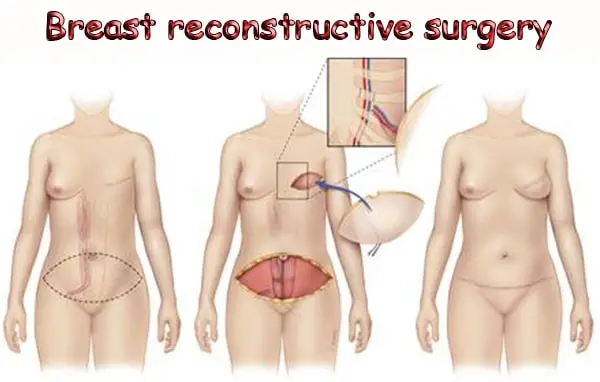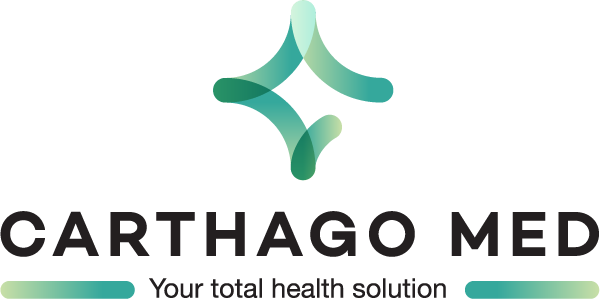
Reconstructive Surgery
What is reconstructive surgery? Why is it done?
Reconstructive surgery is a type of plastic surgery that is performed on abnormal structures of the body that are caused by birth defects, developmental abnormalities, trauma, infection, tumors or disease. The main goal of reconstructive surgery is to improve function, but it may also be completed to create a more normal appearance. For example, physical abnormalities of the breast caused by developmental abnormalities, tumors or trauma can be corrected by reconstructive surgery. Reconstructive surgery is commonly covered by most health insurance policies, although coverage for specific procedures and levels of coverage may vary greatly. It is important to consult with your insurance provider before having surgery. Before having any reconstructive surgery, you may want to consult with a support group. You will receive general anesthesia before the surgery and will not feel anything. The specific risks and suitability of a procedure can only be determined at the time of consultation. All surgical procedures have some degree of risk. Minor complications that do not affect the outcome occur occasionally. Major complications are unusual.
What are the different types of reconstructive surgery procedures?
Today, surgeons use a wide variety of techniques for the reconstruction of a breast. The most common type of reconstructive breast surgery is implant-based reconstruction, where a silicone-gel or saline implant is placed beneath the skin and chest muscle. Another type of breast reconstructive surgery is autologous tissue reconstruction, where a woman’s own tissue is used to create a breast shape. Tissues from the abdomen, thighs, or back are often used, but it is most common to use tissues from the lower abdomen to reconstruct the breast, in what is known as a DIEP flap. This type of surgery involves using the blood vessels and fat from the lower “spare” abdominal tissue (i.e. living tissue that is not needed to maintain normal bodily function), and no implant is necessary. Finally, a newer reconstructive technique called fat grafting, where fat is removed from the thighs, stomach or hips through liposuction, and used to help mould, shape and reconstruct a breast after surgery, may be possible in some cases of breast reconstructive surgery.
How often is reconstructive surgery performed? How common is it?
Most people get a general idea of what this phrase means in the medical sense. They imagine that reconstructive surgery is something medical, and it probably involves repairing damage done by some sort of trauma or accident. It’s easy for people to make assumptions about the frequency of reconstructive surgery, especially when they see treatments in the news and on TV, but in reality, it’s difficult for anyone except for healthcare providers to truly grasp how often it is performed. Reconstructive surgery is a little more common than some people might think. According to the American Society of Plastic Surgeons (ASPS), doctors in the US performed 5.8 million reconstructive surgeries in 2012, the last year for which complete statistics are available. This number includes many types of surgery, from minimally-invasive procedures like scar revision to complex operations such as tissue expansion. Although these statistics are limited to the US, it is likely that reconstructive surgery is performed just as frequently in other developed countries, including the UK, Canada, Australia and across Europe. The amount of reconstructive surgery in third world countries is unclear; however, it is estimated that a significant proportion of the world’s cases are associated with accidents and acts of violence. In the grand scheme of things, almost 6 million surgeries per year is a very modest figure. To put this in perspective, the US population in 2012 was just over 313 million. This statistic emerges as roughly 1.85% of the national population having undergone some form of reconstructive surgery within the year, although it is broken down to show that many patients are elderly and had surgery in order to improve their quality of life. Without this statistical insight, you would be forgiven for believing that reconstructive surgery is extremely uncommon. However, the significance of these kinds of statistics is that they can give some validation and solace to those who have had surgery, and they can help to raise understanding of the frequency of reconstructive surgery in society as a whole.
Are these treatments inpatient or outpatient?
Reconstructive surgery may be both inpatient and outpatient. The differentiation between both is determined by the sort of surgery and medical necessity. Still, the aim of the operation itself, condition of the individual and advanced technologies and functioning environment make other important variables which decide whether the individual will undergo inpatient or outpatient medical care. It’s necessary for your spouse and you to use your physicians and healthcare providers to select how and where you can get this operation. Normally, reconstructive surgery, that’s the sole option for individuals who suffered from bodily traumas and accidents, is performed at the inpatient facility. There are lots of reasons why individuals have to be admitted to the hospital after an accident. The principal reason is physical traumas, which need immediate surgical intervention, immediate medical care and focus by the healthcare team. However, in the last few decades, in the instance of technological advancements and advanced medical assistance, patients that are needing reconstructive surgery as a result of genetic history and chronic diseases have the choice to undergo outpatient services. Well, the surgery itself is a significant factor as operation which utilizes complex technologies tend to offer you a number of day services. Also, the working environment where the operation themselves is an important factor too. But generally, the aim of the operation and the condition of the individual are the most important variables to decide whether the individual needs to remain in the hospital or he can elect for a day care services. Nowadays, there are an increasing number of complex surgeries such as complex flap surgeries–all supplying day solutions endorsed by technical medical services. This is extremely helpful to individuals who don’t wish to keep long hours in the working facility but it’s soothing to be aware that patient care is not jeopardized and healthcare teams are present to offer complete services to the individual as and when required.

What’s the difference between cosmetic surgery and reconstructive surgery?
If it is performed to get better an abnormal feature brought on with the aid of contamination, trauma, congenital deformity, developmental anomaly, or a breast associated disease, it is typically considered to be reconstructive in nature. The system is specifically meant to assist the character regain ordinary frame feature. A lot of times reconstructive surgical procedure can involve more than one process, and there will likely be a couple of stages to the treatment. On the other hand, cosmetic surgical treatment is achieved to amend capability, however it’s far driven by a affected person’s choice to improve their appearance by using reshaping or resizing in a few form. It’s targeted on enhancing the aesthetic enchantment and symmetry of facial and frame structures. Many cosmetic surgical operation approaches are extremely honest; however, they can are still extreme operations that do have dangers and necessarily could have some pain or soreness. Unlike many reconstructive surgeries, which might be paid for via various coverage programs, beauty surgical operation typically come with a hefty charge tag. Cosmetic surgical procedure does have an area in medicine, specifically with regards to how the manner aids someone’s intellectual health and typical wellness. However, it’s miles important to understand and recognize the variations among cosmetic and reconstructive methods.
How will the surgeon evaluate my case?
There is not a set formula to evaluate a case with breast cancer; every case is unique. However, surgeons will evaluate the case in light of guidelines to determine how to proceed. First, surgeons will look at the type of cancer and the stage of the disease. This will involve imaging results such as MRIs, mammograms, and biopsies. The surgeon will evaluate the size of the diseased area and whether the cancer has spread, which affects what kind of surgery can be considered. Further, if the cancer is an invasive type, a group of cells can be analyzed in a laboratory to determine if the cancer cells are estrogen receptor positive, progesterone receptor positive, or human epidermal growth factor receptor 2 positive. These analyses assist the surgeon and the patient in deciding the timetable and options for surgery. Surgeons will also evaluate what kind of surgery is possible and consult with the patient. Finally, the surgeon will also consider the medical history of the patient. Certain medical conditions can affect how surgery should proceed. For example, a patient who suffers from blood clots may need to have surgery in a special way that minimizes the risk of complications from blood clots forming. Additionally, if a patient has had radiation therapy in the past, current breast reconstructive surgery options may be affected. Some of the methods of radiation treatment can decrease the supply of healthy breast tissues for surgery, making more invasive reconstruction necessary in some cases.
What happens before a breast reconstructive surgery?
If you’re preparing for a reconstructive breast surgery then you will have to prepare a number of things. First of all, any of us will have to see lots of different kinds of medical professionals. For example, a surgeon will examine us to make sure we are healthy enough for surgery, and recover from surgery. However, seeing lots of people for different things is important for treating cancer well. We know from research that it is best to help people when they see that kind of treatment. Also, it helps to get only a single kind of one treatment at a time to give the best chance of winning. So doctors like to know if we want breast reconstruction. If we do, they would give us a sort of surgery where a doctor creates a new breast’s shape, and something to complete out breast skin. If not, then it’s important to note that you do not have to have breast reconstruction. And also wait for as long as we get – maybe even some years after the surgery. All patients need to be given the best possible information before we make any decisions. Also try not to feel overwhelmed when you are given the information you will need to make these decisions. It is not an emergency, so it is best to take as long as we want. But it really helps to talk to as many doctors as possible. Each of these has a special point of view. For instance, a surgeon will discuss with you the possibility of physical improvement by means of breast reconstruction. However, a cancer specialist who plans to treat their illness may recommend that you postpone the operation, probably until after having cancer surgery and treatment. Also, a psychologist can guide patients through the process of coping with the surgery and its potential physical and emotional outcomes. And it helps patients to gain some insight into their own feelings and approaches. This is important because things like body image, coping with changes and self-esteem can play a big part in making decisions. However, also remember that everyone is different. So much as whether something feels a quick post-operative recovery ago or you may have just been diagnosed, it is really important to think about your own reactions when a journey of this type is being planned.
What happens in breast reconstructive surgery? How is the procedure performed?
A breast reconstructive surgery aims to recreate the breast. There are a couple of different ways to do it. You can use tissue expansion with breast implants or you can use flap reconstruction, which obviously uses your own tissue. You would use a tissue expander directly, usually under the muscle. It’s kind of like a water balloon which gets slowly inflated over time, and what that does is actually stretch the skin and muscle to create a little pocket to which a permanent breast implant can then be placed in a second operation. On the other hand, if you have a flap reconstruction, that’s a much longer surgery – probably about 8 hours, but you then get a really long-lasting and natural appearance. It’s a bigger operation, it’s a longer stay in the hospital, it’s about a week, but there’s also a bigger recovery period as well. It’s a two-stage procedure, so the first stage is using the initial operation to recover, and then there’s a second procedure probably three to six months down the line which would create the final result.
How long does reconstructive surgery last?
The length of reconstructive surgery varies considerably depending on the individual requirements of the procedure. There are 2 types of surgery in terms of the length of time it takes. Minor reconstructive surgery is defined as surgery that takes 30 minutes to 2 hours to perform. Major reconstructive surgery refers to operations that take over 2 hours to complete. Even more concerning is the fact that you’re at an increased risk of developing problems if your surgery extends beyond this time frame. However, one known research project was able to back up these views. Shermak, M.A. et al conducted a study that involved looking at the complications that arose from surgery. The risk of developing complications increased by 9% with each additional 15 minutes of operating time. One specific problem that can occur if surgery is prolonged is the interruption of blood flow. This is when the amount of blood required to help heal the wound is restricted. Without the right level of nutrients and oxygen, the recovery process is more difficult. This can then lead to tissues dying and an increased risk of infection. It’s very important to be aware of the length of reconstructive surgery, particularly to understand the risks.
What happens after breast reconstructive surgery?
When the surgery is over and you’ve had good news from the doctor, you’ll still need plenty of rest and time to recover. You’ll be able to find out when it’s safe to start moving around and getting back to your normal routine from the doctor or surgeon. It’s really important that you don’t try to do too much, too soon. Your body needs time to heal, and you might make things worse if you try to rush your recovery. It’s common to feel tired and sore for a week or two after the operation. You might find that bruising and swelling after the surgery may make you uncomfortable, and you may be tender and sore. Sleeping propped up on pillows can help reduce any swelling – your doctor or surgeon may recommend how many pillows is best for you. Most people find that they recover well from breast reconstructive surgery, but it’s important to be aware of how you feel and to give your body time to heal. Don’t push yourself too hard or too fast, and if you’re worried about how you’re feeling, speak to your doctor.
What are the advantages of reconstructive surgery?
While some individuals may undergo reconstructive surgery for aesthetic reasons, most of the time, these procedures are necessary to correct body abnormalities caused by birth defects, trauma, tumors, infections and other serious health problems. Many of the procedures and techniques used in plastic surgery are the same as those used in reconstructive surgery according to the American Society of Plastic Surgeons. Some of the main advantages associated with reconstructive surgery are listed below: It can help to eradicate physical discomfort Some abnormalities in the body can lead to physical discomfort and other health problems. For instance, very large breasts can lead to chronic back and neck pain. By undergoing reconstructive surgery to reduce the size of the breasts in this case, the patient is able to live comfortably. It helps to improve overall health Reconstructive surgery can help to eradicate present and future health problems. For instance, the American Society of Plastic Surgery identifies breast reduction surgery as a procedure that can help to prevent numerous health problems including chronic skin infections and inadequate oxygen levels in the body. It enhances self-confidence and mental health Most people who were born with body abnormalities or those that develop as a result of accidents and diseases often lose their self-confidence. This can lead to various mental health problems. Reconstructive surgery can help to restore the confidence of such individuals and minimize the possibility of mental health issues. It corrects aesthetic deformities Aesthetic deformities like those caused by facial injuries and burns can be corrected by reconstructive surgery. These deformities, according to the Annals of Plastic Surgery, often hinder normal facial expressions and movements as well as the ability to see. Reconstructive surgery can help to minimize these physical and emotional limitations. It ensures lasting and natural results Most plastic and cosmetic procedures aim to make people look younger or to completely change their appearance. However, reconstructive surgery mainly focuses on improving abnormal body structures. As a result, according to the American Society of Plastic Surgeons, reconstructive surgery is designed to correct the abnormality guaranteeing lasting and natural results.
What are the risks or complications of reconstructive surgery?
The intention of health care professionals is to achieve optimal healing with the smallest amount of intervention and the lowest level of risk or complications. It is important that patient and doctor understand the possible complications and are able to discuss the degree of risk involved in the procedure. It is common for a patient to feel anxious about medical interventions, particularly before elective procedures in which the patient has had time to anticipate the surgery. The Royal College of Surgeons of England advise that patients should talk to the surgeon about any concerns they may have. It may be helpful to discuss alternative options, the risks and benefits of different treatments and have the opportunity to see other health care professionals involved in the patient’s care. Every surgery carries risk, and in fact, most people undergoing surgery do not suffer from major complications. The risk will depend on a number of factors including the individual’s general health, age, whether they smoke and the nature of the surgery itself. Some complications such as excessive bleeding or infection may be readily apparent and dealt with immediately. However, complications specific to surgery such as wound breakdown or more general risks such as blood clots to lower limbs may require further treatment or intervention. It is important to consider that there are significant potential psychological effects of surgery. Research shows that there is a causal link between plastic surgery and increased body dissatisfaction, particularly amongst individuals with a vulnerability to developing this in relation to appearance (and without any respite in symptoms). More specific to reconstructive surgery, patients may feel a loss of identity particularly after major procedures such as craniofacial reconstruction or gender affirming surgeries. These psychological risks should always be considered prior to reconstructive surgery. The possibility of failed surgery or the need for further corrective treatment may also have a psychological impact on the individual.
How effective is reconstructive surgery?
Reconstructive surgery is usually effective in significantly improving the person’s capacity to work and ease of life, as the way they look to others tends to influence many social areas. Once a valid surgical option is faced and a healthcare team is available, improvements to the patient’s function are significant and enhanced recovery becomes a reality. In today’s world Health and Social Care professionals, regularly encourage and promote the possibility of medical solutions to aid a range of patients with varying needs to most effectively achieve and conquer the limitations they face. Everyone has the right not to be discriminated against or patronized, this can refer to patients, family members, and even healthcare workers. If someone requires permanent makeup or hair loss solutions because of a condition, someone may argue that they do not want to be a burden with a need for a set routine for application, particularly if there is a special event or functions to attend to. If someone has suffered a trauma or has a painful or severe skin condition, someone may wish to seek specialist advice and access healthcare options that offer a cure or at least an alleviation of their symptoms. If a diagnosis and treatment option have been recommended; healthcare professionals have a duty to work with and advise the individual. Someone may require help to digest information or anxiety issues may surface. It is crucial to create a person-centered care plan, taking into account the psychological, social and health needs of the patient, and any family who may be bearing witness to their loved one’s physical or mental need.
When can I go back to work/school?
You need to plan to take one to two weeks away from work and perhaps more if your job is very physical. For teenagers, it is recommended that you take two weeks away from school to prevent accidentally damaging the surgical area. With college or university, this is more flexible and varies from patient to patient. Even if you feel fine after a week, it is important to remember that your body needs to heal so you may not look or feel ‘back to normal’ for a while. You should avoid swimming and contact sports for around six weeks as well as more heavy lifting and vacuuming for three months. A simple way to think of it is that high intensity physical exercise, which would include running or weights, is best avoided until healing is complete. It is still important to keep up gentle exercises, such as walking, to avoid any blood clots forming. For adults or children at school, a sick note can be provided by the hospital for a length of time recommended by the surgeon. However, it is worth making plans with work or school beforehand, for example not scheduling any meetings for the first week back for adults or mentioning to your child’s school office of their upcoming absence. Remember that everybody heals differently and these are rough guides only. Try to plan so that you make the best of your time away from work or school; rest, take care of yourself and look forward to returning when you are completely ready.
When should I contact my healthcare provider?
If you have any queries or issues about your care, or the data from the breast screening unit, we suggest that you contact the staff who provided your original care first of all. All breast screening units in England now provide tests and consultations for people with health issues self-assessed as more than the smallest carcinogenic risk. However, in almost all cases, your original doctor or nurse will be the person best placed to respond to your concerns. If required, this clinician can refer you as a priority case to the local health authority’s special cancer referrals screening office. This will mean that you will be able to make maximum use of the professional knowledge and critical clinical information most relevant to your unique case in planning future care, while at the same time avoiding unacceptable delays. If you have previously had a breast screen showing no significant abnormal data, the general advice is to request re-screening after three years. However, in the interim period, if you develop any health issues including changes in your breasts, it is essential that you seek medical advice without delay. Research shows that the great majority of people with cancer receive treatments and therapeutic interventions for the condition at the earliest opportunity: victims who report latencies of more than three months between detection of cancer symptoms and initial consultations with a physician display dramatically reduced recovery rates. So, if you have questions or concerns, we always urge you to take advice and then act upon it as efficiently as possible.









